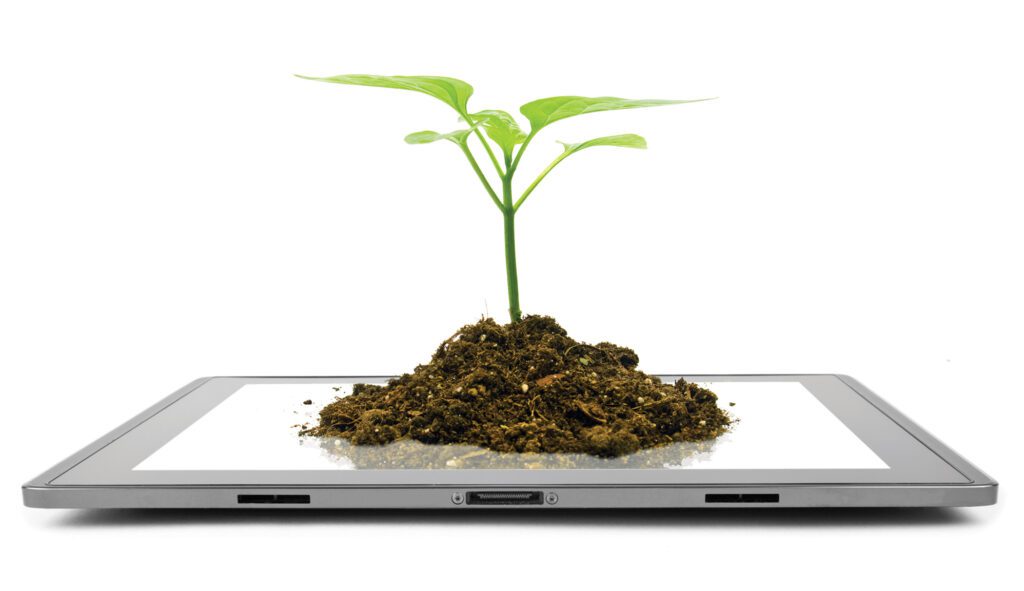Data Monitoring Technology Gives Farmers a New Advantage
by TERESA SCHIFFER
Modern technology is changing the way we do almost everything, that’s an inescapable fact. Even the ancient practices of agriculture are being updated for this modern era. Farmers now have a plethora of new tools at their disposal to help them maximize their yields while minimizing costs. Companies like Onset, out of Bourne, Massachusetts, are capitalizing on this trend by providing farmers with the most up-to-date technology available to make modern farms more efficient and productive.
We talked with Richard Rodrigues, Onset’s product marketing manager, about how farmers are making use of today’s innovative technology to cut back on waste and streamline their processes.
“Modern technology is enabling farmers to do more with less,” Rodrigues explains, “basically, by allowing them to be in more places at once and also being able to be more targeted in their approach.”
For example, through data monitoring, farmers are able to determine at what point their crops need to be irrigated, thereby reducing water usage. Pesticide application is another prime example of tech-driven conservation, as farmers are better equipped to treat for particular pests when they pose a real threat instead of going with a “spray and pray” approach.
When it comes to data monitoring, temperature and humidity tend to be the first parameters that farmers get set up to measure. Being able to keep a close eye on these two conditions informs farmers as to how they need to handle irrigation and pest control. Soil moisture and wind speed and direction are next on the list for most farmers to monitor.
As a farmer enters the world of modern data monitoring technology, often one of the first devices they will invest in is something to measure soil moisture. There are some great entry-level devices on the market that are very affordable. Onset’s line of soil moisture sensors starts at just $139 per sensor. Typically, devices for monitoring temperature come next. Temperature mapping, which is very popular among Onset’s customers, is the practice of recording temperatures at different points in the fields and comparing how they change over time.
One of Onset’s more popular products is a sensor network that can be deployed throughout the farm. These sensors then communicate with a central station, creating a dashboard of useful information for the farmer to have at his fingertips. Soil moisture sensors are one example of the data collection tools in this type of network. These sensors are capable of triggering an irrigation system based on the programmed needs of the particular crop they are set to monitor. This can not only help reduce unnecessary water usage, but also prevent a costly loss of crops due to a lack of water.
Another popular product Onset offers is a temperature sensor. Farmers are able to set a directional on a sensor from which they can receive an alert when the temperature falls outside of a certain range. This alerts farmers to impending frost or excess heat, allowing them to take necessary precautions to protect the crops.
For farmers reluctant to adopt new technology, Rodrigues assures them that the benefits are tangible. Not only will the use of modern data monitoring equipment reduce water and pesticide waste, thereby reducing environmental impacts, these conservative practices will ultimately manifest in monetary savings over time. Researchers at Cornell University have been working to calculate exactly what the cost benefit to farmers is, and have come up with an average annual savings of $2,060 per acre where data monitoring technology is being utilized. This is derived from pesticide, water, and fuel savings. In a situation where a farmer is able to avoid crop losses, however, that number skyrockets to an estimated $33,048 recovered. With these types of savings, farmers can expect to recoup their initial investment on data monitoring devices in their first year.
In addition to the fiscal benefits, data monitoring can also aid farmers in complying with existing and future environmental regulations. As new standards are adopted for limiting water and pesticide usage, proper data monitoring can document conditions and verify that guidelines are being followed.
If farmers need help getting their devices set up or troubleshooting established equipment, Onset does have an application team available to advise farmers on issues with setup and best practices.
“When things go wrong, one of our strong points is our customer support team here,” Rodrigues says.
However, there is typically local assistance available to answer questions as well. In Florida, the University of Florida IFAS Extension offers the Florida Automated Weather Network (FAWN) to provide information on best practices and setting up the technology.
FAWN is an organization available to provide local, integrated weather data to farmers in Central Florida. This system also informs farmers of what pests, such as insects or fungi, they should be aware of that are causing problems in their region. Onset’s devices are capable of connecting to the FAWN network, making that information readily available to farmers. FAWN can provide information specific enough for farmers to be able to address the needs of individual sections of their land. Once connected to the network, data from those farms is collected by FAWN to create a more accurately detailed representation of conditions in the area.
So what does the future hold for the farm data collection industry? Rodrigues predicts that there will be more innovation in the area of communications. Greater and wider networks are being developed to relay vital information quickly to the right hands. While the overall acreage of farmland in the U.S. has remained constant over the last few years, the number of farmers has declined. That means that fewer farmers are managing larger parcels of land.
“What technology is allowing these farmers to do is to actually do that well,” Rodrigues explains.
“They can monitor more and more acres of land, with more varied crops on that land, without expending as much time. The one thing we can’t grow is more time.”

